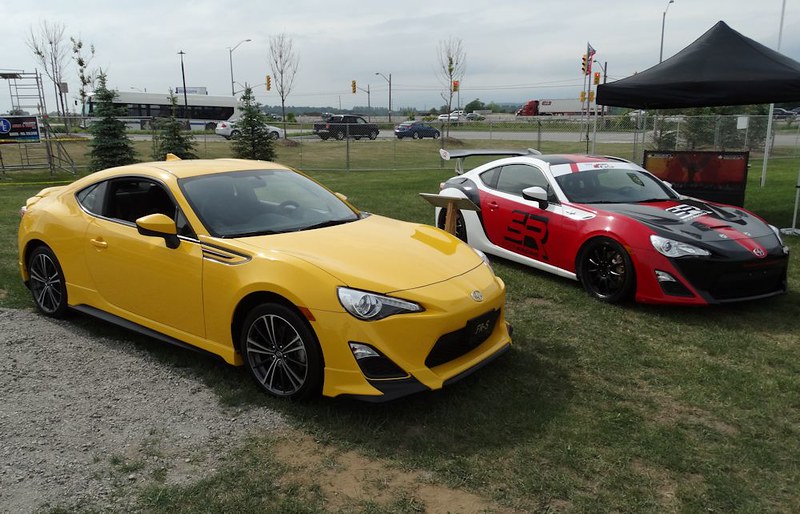 |
| Photo Credit: Chris Nagy |
When Billy Joel once sang that "Only the good die young", some could ponder if his words are prophetic to Toyota's experiment with a youth-driven brand. Bearing a name symbolizing an offspring or descendent, Scion was deliberately launched as a targeted method to court the Generation Y or Millennial automotive customer. After 13 years, Toyota's has announced plans to discontinue the Scion brand.
A sudden announcement from the world's largest automaker, the move by Toyota is not unexpected. Since its launch in 2003, Scion has experienced varying success in the marketplace. Sale numbers for Scion have never arisen to expectations. Despite boasting well-equipped, practical vehicles and some compact performance spice with the Scion FR-S, the brand had trouble identifying with a large customer base. At the end of 2015 in the United States, the entire sum of Scion sales accounted for just 56,167 vehicles of Toyota's total of over 1.1 million cars.
In retrospect, one hint could have been noticed by journalists and automotive analysts in January with the 2015 year-end vehicle sale numbers for Toyota Motor Sales USA and Toyota Canada Incorporated. Reviewing the charts, Scion brand products were integrated into Toyota brand car sales instead of being represented in a separate division. The combination of the Scion vehicles with Toyota-branded products also partially disguised dismal overall sale numbers.
 |
| Photo Credit: Chris Nagy |
The shuttering of the Scion division comes as the brand just introduced the iA sedan (a US only model similar to the Toyota Yaris sold in Canada) and iM hatchback for 2016. At the 2015 Los Angeles Auto Show, Scion again appeared healthy with the C-HR concept with likelihood that the sporty crossover could enter production. At the end of 2016, all remaining Scion models will be integrated with the Toyota brand. This will include the production variant of the C-HR concept vehicle. It remains unknown if Toyota is retaining the names of the Scion products or plan to adapt other names. In places outside of where the Scion brand was sold, the Scion FR-S sports car is the Toyota FT-86 and the iM is called the Auris in Europe.
Regarding the winding down of the Scion brand, Toyota's CEO Jim Lentz explores the positives for involving the vehicle line-up into the Toyota brand. “This isn’t a step backward for Scion; it’s a leap forward for Toyota. Scion has allowed us to fast track ideas that would have been challenging to test through the Toyota network,” said Lentz. Jim Lentz was a vice president of Scion at the time the marque was established. The Scion brand's successes included the attraction of a customer base where 50 percent of vehicle buyers were under the age of 35 years old. Scion also drew 70 percent of new car buyers who have never purchased a Toyota product.
Scion's debut came in 2003 in California and a year later on a national level across the United States. Canada's experience with the Scion is roughly just half of the brand's total history. The Scion vehicle line was first sold in Canada for 2010 with the xB, xD and tC. Interesting, while Scion suffered a sales decline in the US for 2015, sales of the division actually increased in Canada over 2014 helped heavily by the release of the iM hatchback. However, just like in the United States, the Canadian sales under the Scion brand account as a token sum of 2015 Toyota sales. Current and 2016 owners of Scion products are being assured there will be no disruption to service, repair and warranties for vehicles.
The FR-S, iA sedan and iM hatchback will be unified with Toyota for the 2017 model year. As for the tC, a final release series of the two-door coupe is planned for August.

Comments
Post a Comment